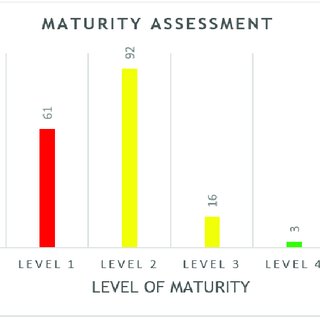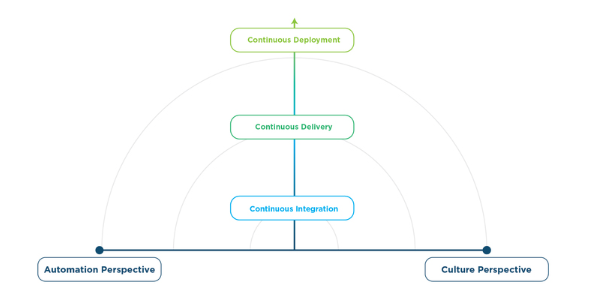Understanding DevOps - Goals, Challenges, and the Path to Maturity
DevOps is not just a set of tools or practices; it’s a transformative approach that redefines how teams in software development and operations collaborate. Traditional software development workflows are characterized by isolation, inefficiency, and often a culture of blame among teams, especially in complex, fast-paced environments. DevOps addresses these challenges through continuous integration, delivery, and deployment, bringing together culture, automation, and maturity for enhanced productivity and reliability.
Challenges That DevOps Solves
In a pre-DevOps world, software development teams were siloed, leading to communication barriers and a lack of shared responsibility. Here are some key challenges DevOps is designed to solve:
Team Isolation and Fragmentation: Traditional workflows isolated Development (Dev), Quality Assurance (QA), and Operations (Ops) teams. Developers focused on feature creation, QA prioritized bug detection, and Ops sought to maintain system stability. This setup fostered conflicts, with each team unaware of the others’ constraints and goals.
Conflicting Goals and Priorities: Each team worked with distinct, sometimes opposing, objectives—developers prioritized speed, QA aimed to find and resolve issues, and Ops focused on minimizing change to maintain stability. This created bottlenecks and inefficiencies, especially when critical issues arose in production.
Limited Context and Communication: Isolated teams often lacked insight into the broader project scope, such as business objectives, user needs, and operational constraints, leading to misalignment. This hindered the creation of robust, user-centric solutions.
By introducing DevOps, organizations bridge these gaps. Cross-functional teams share accountability, fostering a collaborative environment where development, testing, and operations work in unison to achieve seamless deployments and high-quality products【6†source】.
Goals of DevOps
The primary objective of DevOps is to improve collaboration and automate the software delivery process. Key goals include:
- Increasing Deployment Frequency: Continuous integration and delivery (CI/CD) practices enable teams to deploy updates rapidly, accelerating the pace of innovation.
- Reducing Time to Market: Faster development cycles mean quicker delivery to market, allowing businesses to respond swiftly to changing market demands.
- Lowering Failure Rates of New Releases: Automated testing and monitoring reduce errors, ensuring more stable releases.
- Shortening Recovery Times: Quick recovery from failures is essential, minimizing impact and downtime for end users.
- Enhancing IT Organization Performance: DevOps enables IT teams to work with improved efficiency, delivering tangible benefits in deployment speed, failure rates, and recovery times, as evidenced in the 2015 State of DevOps Report, where high-performing IT organizations reported 30 times more frequent deployments and 168 times faster recovery from failures【21†source】.
Continuity in DevOps
Continuity in DevOps is achieved through continuous integration, delivery, and deployment, which together form the DevOps delivery chain. This chain supports a progressive DevOps maturity model, encouraging organizations to build up capabilities over time.
Culture vs. Tools
The DevOps continuum can be visualized across two axes:
- Horizontal Axis: Represents the spectrum of focus in DevOps, where some organizations emphasize cultural collaboration, while others prioritize technical tools.
- Vertical Axis: Maps the stages of DevOps maturity—from continuous integration at the base, moving up through continuous delivery and continuous deployment.
Survey data illustrates where organizations stand on this continuum:
- 55% focus on cultural maturity with a foundation in continuous integration.
- 26% emphasize tools and delivery automation.
- 14% have a strong culture but are early in their deployment automation.
- 5% are advanced in both cultural and technical maturity.
This progression reflects that DevOps maturity is a journey, where organizations often begin with a combination of cultural and technical foundations before advancing to more sophisticated stages like continuous deployment【27†source】.
Phases of DevOps Maturity
DevOps maturity progresses through several phases, each characterized by different practices and objectives. These stages are as follows:
Waterfall Development: Traditionally, software was developed in long cycles with large batches of code, integrated at the end of each phase. This outdated model was time-consuming and prone to integration issues.
Continuous Integration (CI): In CI, newly developed code is frequently integrated with the main branch. This agile engineering practice saves time by automating integration processes and is usually the first step towards DevOps maturity.
Continuous Delivery (CD): An extension of CI, continuous delivery builds on integration by automating additional testing and deployment steps. This ensures that code is consistently in a deployable state, with minimal human intervention required.
Continuous Deployment: At this stage, code is automatically tested and deployed to production without human oversight. This highly advanced stage is practiced by leading tech companies like Netflix, Amazon, and Google, which deploy new code frequently and monitor it automatically to ensure stability before scaling up【33†source】.
DevOps is a transformative approach that addresses long-standing challenges in software development, including team isolation, conflicting goals, and limited communication. By fostering a culture of collaboration and leveraging automation, DevOps enables organizations to improve deployment frequency, reduce failure rates, and shorten recovery times. The journey to DevOps maturity is unique for each organization, beginning with cultural and technical foundations and evolving through continuous integration, delivery, and ultimately deployment.
DevOps represents a shift towards a unified approach where every team shares accountability for delivering high-quality, stable software, enhancing organizational performance and enabling rapid, reliable innovation. As businesses advance along the DevOps continuum, they position themselves to thrive in a fast-paced, technology-driven market.

